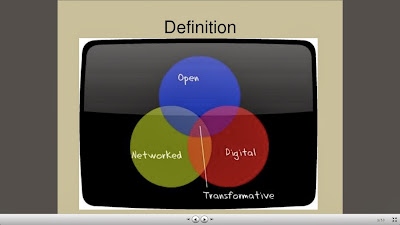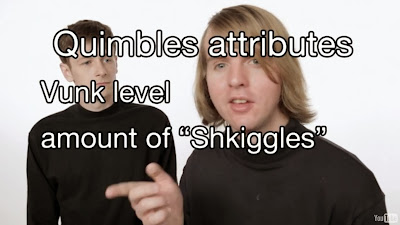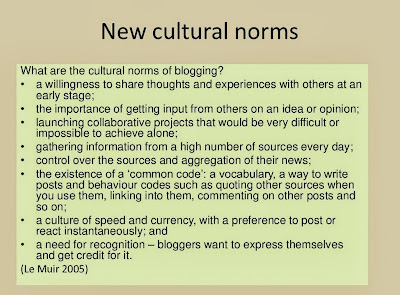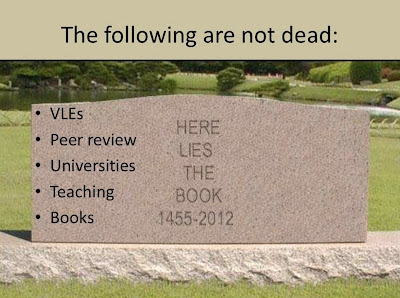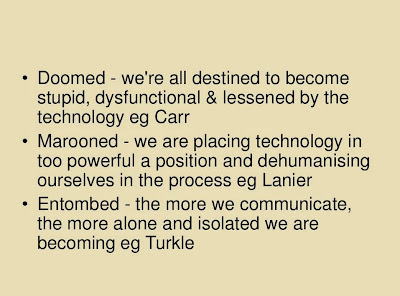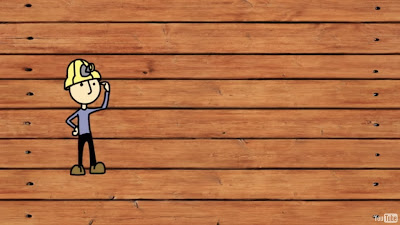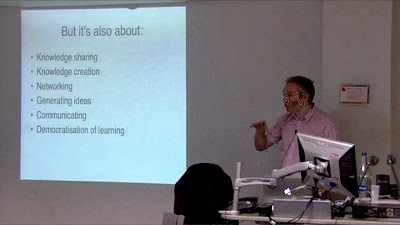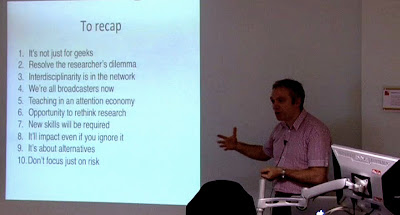Home » Posts tagged 'weller'
Tag Archives: weller
What do you understand by the word ‘curation’? What does it mean in relation to content online?
Fig.1. Bristol Fighter at the Imperial Museum
My understanding of curation is embedded in museums – I overheard the curator of the current Superhuman exhibition at the Wellcome Foundation Museum being interviewed by Aleks Krotovski on Tuesday.
When I took a picture using my iPad a member of the museum staff politely told me that ‘the curator asked that people did not take pictures’ (and that the curator was in part to blame as he hadn’t wanted the signage saying ‘don’t take pictures’ too prominent) – curator as stage manager and executive producer of a collection of themed objects. The term ‘object’ itself embracing stills, artefacts, video-clips and activities. You curate stuff in a space and set parameters so that an audience of visitors can get their head around what, in effect, has come the curator’s mind.
In the bizarre ways that these things happen I recall, age six at most, creating a fossil museum with ammonites found in the low rocky cliffs of Beadnell, Northumberland.
I was a curator, I brought together a themed collection of rocks, set them out in a room and invited people in – no doubt in the back of my mind imagining the glass cabinets and displays in the Hancock Museum, Newcastle.
Ian McGreggor of the British Museum with his History of the World in 100 objects is a curator – far more so than an amateur’s eclectic collection of e–stuff. Or am I being a 20th century snob? Craving for academic elitism that is fast vanishing down the plug–hole as the digtal ocean and equally digital–cloud washes and blows over everything? I search that externalised part of my own mind, an extensive blog 13 years in the writing, for what I’ve said or stumbled upon before regarding ‘curation’ and find three entries, one prompted by my intention to attend this session in Bath and feeding off a visit to the De le Warr, Bexhill and the rest from Martin Weller’s book ‘The Digital Scholar’ in which he lists curation as something universities will need to do. On Chapter 12 he has this list on publishing as:
- Publishing
- Research
- Authoring
- Submission
- Rejection/modification
- Publication
- Dissemination
WHY?
- Accepted practice
- Academic respectability
- Reward and tenure
- Dissemination
- Curation
I wonder if this following quote gives a sense of Martin Weller‘s comprehension of the term ‘curation’ as used in a Web 2.0 context:
‘If Boyer’s four main scholarly functions were research, application, integration and teaching, then I would propose that those of the digital scholar are engagement, experimentation, reflection and sharing’. Weller (2011).
On a quest to become ‘digital scholars’ or ‘thought leaders’ we should, to change one word –engage, experiment, reflect and curate’? The word, used in this, come to think of it, ought also to include ‘moderate’, even to ‘chair’ or ‘host’.
In 2002 Gilly Salmon, then a lecturer at the Open University Business School, tried to coin the terms e–tivity and e–moderator.
Perhaps then, as these things go, the digital community have not picked up on these terms – instead they have hijacked ‘curation’. We are going through a rich phase of redefining and inventing words and understandably they result in carnage and debate. Academics are guilty I feel of sometimes wanting to be the first to coin a word or use a new phrase or word in a new way because citation will mean that they are then quoted for every more. This happens in academic publishing and study, unfortunately ‘curation’ can leave you wondering about the source. Is ‘jumbling together’ the content of others from multiple sources even more questionable than turning to self–monitored wikis such as wikipedia?
Weller also says:
‘If the intention is to encourage engagement then low-quality routes may be more fruitful than seeking to produce professional broadcast material’. Weller (2011) and ‘Low quality individual items because of their obvious ease of production, can be seen as an invitation to participate’. Weller (2011)
Is curation a dirty word? Is curated content reliable? What does it mean in the corporate world?
REFERENCE
Krotovski, A (2012) The Digital Human. BBC Radio 4 (last accessed 22 October 2012)
McGreggor, I (2011) The History of the World in 100 Objects –http://www.bbc.co.uk/ahistoryoftheworld/about/british-museum-objects/ + Neil McGreggor
http://www.bbc.co.uk/podcasts/series/ahow/all
Salmon, G. (2002). E-tivities: the key to active only learning. Sterling, VA : Stylus Publishing Inc. ISSN 0 7494 3686 7
Salmon, G (2002) e-moderation
Stodd, J (2012) https://julianstodd.wordpress.com/2012/10/19/creating-and-sustaining-high-performance-learning-cultures/
Sullivan, A (2000-2012) The Daily Beast
Weller, M (2011) The Digital Human. More from Martin Weller in his blog: http://nogoodreason.typepad.co.uk/Wijekumar, K. J., Meyer, B. J. F., Wagoner, D., & Ferguson, L. (2006). Technology affordances: The “real story” in research with K-12 and undergraduate learners. British Journal of Educational Technology, 37(2), 191-209.
Blogging as an acdemic and scholarly acitivty
What’s going on in there? How do bloggers react, respond and coalesce?
Anjewierden, A. (2006) Understanding Weblog Communities Through Digital Traces: A Framework, a Tool and an Example.
My own interest was sparked by an article in the Washington Post on Ellen Levy who had spent 1998 keeping a journal and putting it online.
Druckerman, P (1999) Ellen Levy Has Got The Write Project For the Internet Age — It’s a Year of Scribbling Down Almost Everything; Ah, Yes, It Was a Raisin Bagel
This ‘user generated content’ has value to its author and the community that reads it. This is a key outcome of open, collaborative and connected learning, where the blogger is a ‘produser’.
Efimova, Lilia (2008) Bloggers and ‘produsers’
Having blogged consistently since this period it is interesting to understand that as it encroached upon student and academic practice, as it was impinging on journalism, that it was considered disruptive.
Fiedler, S. (2004) Introducing disruptive technologies for learning: Personal Webpublishing and Weblogs, Part I
While my passion felt like a niche practice it has been of value to see blogging recognised.
Kaiser, S. (2007) Weblog-technology as a trigger to elicit passion for knowledge
Why MAODE students blog (Kerewella et al, 2009) depends on their perceptions of, and for:
- an audience
- community
- the utility of and need for comments
- presentational style of the blog content
- overarching factors related to the technological context
- the pedagogical context of the course
Kerawalla, L, Minocha, S, Kirkup, G, & Conole, G (2009) An empirically grounded framework to guide blogging in higher education
Knowing the practice to be of value personally as part of a number of specialist groups made research on blogs as wikis, Sauer (2005) or as e-portfolios of interest.
Sauer, Igor M. (2005) “ Blogs” and“ Wikis” Are Valuable Software Tools for Communication Within Research Groups
As Smolkin (2007) points out it is about creating or finding and then sharing your niche – in this case the niche being personal stories of participants, witnesses and combatants in the First World War.
Smolkin, Rachel (2007) Finding a Niche. (cover story)
This is a key outcome of open, collaborative and connected learning, where the blogger is a ‘produser’. Efimova (2008) It has taken over a decade, but blogging is now considered to be a valid, scholarly activity. Weller (2012).
Weller, Martin (2012) The virtues of blogging as scholarly activity
Bishop, D. (2013) ‘Blogging as post-publication peer review: reasonable or unfair?’ LSE Impact of Social Sciences blog. 21 March.
Available at:http://blogs.lse.ac.uk/
impactofsocialsciences/ 2013/ 04/ 15/ blogging-as-post-publication-peer-review-reasonable-or-unfair/
Martin Weller: ten digital scholarship lessons in ten videos
Martin Weller: ten digital scholarship lessons in ten videos
The greatest quality of a Martin Weller lecture is that leaves so much unsaid and unexplained. This isn’t a fault of the lecturer, rather it is either his personality to take an answer so far, to ask questions and then to leave question marks of various shapes and sizes hanging there. Your mission, if you care to take it, is to go and find answers.
In this talk, or presentation … or seminar (responding to questions afterwards lasts as long as the talk itself) Weller considers what it means to be a digital scholar, and in relation to H818 addresses the benefits and pitfalls of being open.
He begins with his book ‘The Digital Scholar’.
You can buy it – it’s a book and an eBook. You can also download it for free. Its creative commons copyright also permits you to distribute it, attributed, even to mash it up i.e. to play around with it. I do – often. I Tweet it line by line, grab pages and annotate with text and graphics. I try to bring the pages to life, to re-animate the dead. Which is the problem all books have – certainly compared to anyone used to the attraction of interactivity and multimedia and multi-sensory ‘sit forward’ content.
Privacy and online presence
Do what works for you in different situations – there are many degrees of openness. The pay-off of presence is engagement, is to gravitate towards and to be a magnet for like-minds. Weller doesn’t say it, but the best thing you can do online is to ask for advice and to know where to do this – in the right forum you will find an expert with the right voice, tone and techniques of explanation just for you. I have been taken by the openness of Amanda Palmer and her philosophy of knowing what she wants and asking for it.
Scholarly practice in the digital domain means:
-
Sharing
-
Engaging with networks online
- Using resources
And it is, according to Weller, the intersect between openness, digital and networking were transformation occurs. I’d go further than this and put this Venn diagram in an unexpected context – not ‘out there’, not ‘here’ but rather between regions of your brain. It changes you. Those parts of your that you share, that you are open with, through the quasi-omnipresence of your digital being as it is networked, as connections form – as they do at home, around you with your friends and colleagues, so it creates new and otherwise unlikely tingles of response and activity in your brain. It is neurological.
Scholars have been there defining what scholarship is. However much I look at these guidelines and lists, as though they are prerequisites to get into grammar school and take a degree, I think rather of 1901 and possibly still 1911 Census Returns where anyone attending school is defined as a ‘scholar’. The act of being engaged in learning makes you more scholar than anything else – the potential was there even if it was stymied when kids left school armed with the basics at age 14.
Wherein lies the problem. Weller says ten years, his peer group gives it longer, for the ‘digital scholar’ to emerge. I have argued that the digital scholar is imminent. I would now say that in time, retrospectively, we will identify people who already are the digital scholars – the 18 year old how schooled law graduated recently called to the bar, the 14 or 15 year old who has drilled through academic research to come up with his own viable solution to a medical issue … the academic community won’t accept it for the very reason that they ONLY see scholarship as it is defined and won through traditional, conservative, tightly controlled levels. The digital scholar will transcend these … people will simply appear, professor-like in all but name, as a result of the root they have taken into a subject that circumvents the ‘required’ pathway.
Gobbledygook it may be … but there are what we would understand to be quite normal conversations that plenty around us may have little understanding of. Those brought up in a digital world have always been familiar with its architecture – it just IS, like houses and trees. Whereas we – most of us anyhow, knew what the landscape looked like before. We have seen the bits and pieces, sometimes do disassembled as to make little sense and we have witness the folly and false starts too and the many white elephants.
My niggle with any presentation that quotes somebody is not having the reference. Several hours of searching and I have found only some of the authors quoted and in the case of Waldrop above I can find him, but have no idea where he said it. This matters more to me than ever now, not simply because the level of engagement with the subject that I have reached, but because I expect there to be links and I expect the answer to be a click, and therefore a momentary glance away.
I cannot find Le Muir anywhere. This despite having read more than most on blogging over the last decade. To blog is interesting because the reality is that only a fraction of us take to it … the teenager who kept a diary will make the best blogger, it’s part of you. Now the academic community is beginning to expect the 21st century scholar to blog – to have a digital presence, to wear their research on their sleeve, to become like a special edition iPad or iMac, with a see-through skin. We don’t care what you are like, but let us see all the same.
Weller compares before and after slides in relation to the blank with an OU logo and these colourful visualizations. He shows up a failing though. Someone who is good with words may not be able to visualise their thoughts – simply repeating a word in many fonts or creating a Wordle does not in any way complement or enhance the message. Advertisers discovered the answer in the 1960s – you put an art director and copywriter together. How can we get more of that in education? When I see and listen to academics I almost always see a group of strangers who happen to be in the same room. Even or especially in a jointly written paper I don’t see how or where the collaboration has occurred. It’s not as if they are team behind a TV series, each person with a role so clearly defined that it has a title. That’ll be the day. It would require the ‘digital scholar’ to become the equivalent of the producer or director with others taking part having clearly defined roles. As happens, for example, in a product trial.
I would also question screen grabs as a way to illustrate anything. I’d far prefer that anyone picks up a pen and does a doodle that expresses what they see in their heads – this after all is closer to the meaning the author is trying to put over.
I will return to this moment repeatedly – I admire Weller and those academics who with determination stay on the platform and observe the world as it passes by rather than pandering to the futurologist and revolutionaries who think that we have to sweep away what went before rather than build on it and work alongside it. The first newspapers was printed on the 6th November 1605 – they’ve survived this far. Their savour might be augmented reality.
I particularly like the above. I gave a few weeks of my life to writing a scaving book review of Nicholas Carr and ‘The Shallows’ and then supporting my perspective in a thread that emerged in the Amazon reviews. Perhaps I need to go a few rounds with Lanier and Turkle too then accept that a Master’s education means that I will never stand, virgin-like, in front of authors such as these and offer them my body and soul. They are journalists, popularist, scaremongering, plausible and always wrong.
This grab from an animation by David Shriver might be a life-changer – taking me back to a way I did things a couple of decades ago. I just got on with it. Something that is going to work big one day, has to work small first then multiply. I keep itching to start a lecture tour – I have the projector and lecturn. I know what I want to talk about. I need to book a venue and get on with it.
I agree with the above with an important caveat:
What has become self-apparent to me during the course of the last few years studying online education, and ‘education’ is that human beings are extraordinarily diverse. However much we see ourselves as part of a race or community or cohort or class, we are ultimately very alone in our uniqueness. What ever impression you get, say of tens of thousands in North Korea doing drills together in a stadium, they are, each of them, their own person. One of the most wonderous human traits is the contrarian – even against inclination they will do the opposite so as not to be the same. I particularly like the idea that ‘not learning’ should be see as an educational theory. It’s true – keeping your sheet blank while everyone around you takes notes is an approach. Not learning means that you stand still, or go somewhere else while the conveyor belt of the class moves everyone else forward (though in different steps).
See the 20th March 2012 Lectures at LSE here.
Notes attached as a PDF.
I’m keen to expand on these notes. To fill in the gaps. To find the precise place where Weller refers to what someone has written.
Next step is cutting and pasting this into my external blog. Then spitting it out in bits as and when required. And nailing the references. A couple of clicks and I not only found the reference to John Naughton, but I’d bought his book. 90p on Kindle.
The nature of relationships in a connected world
Fig. 1. A mashup with a screengrab from Martin Weller’s book ‘The Digital Scholar’.
This uses an App called Studio from which I may have been expected or to which I am supposed to provide a link. As I screen grab then crop from the App so that I can ‘publish’ the way like now what?
The nature of relationships in a connected world do matter while the difference between face to face and online may be tangential. Whilst I feel I make new acquaintances online, of more interest is how I have been able to pick up very old friendships – even reconnecting with a Frenchman with whom I went on an exchange visit in 1978!
I wonder about the 150 connections given as a figure that can be maintained – this depends very much on the person and their role. Even when I collected people for the joy of it as an undergraduate I doubt I could muster more than 70 I felt I knew something about and could care for, whilst my father in law, a well respected, influential and even loved university tutor has, in his eighties several hundred contacts – former students on whom he had an impact as an educator. So, the person and their role will have more to do with this ‘connectedness’, which comes with a price, My father in law saw/sees himself as an educator who put significantly more time than his contemporaries into the students rather than research.
I’d like therefore to see ‘digital scholarship’ associated with educators not simply for what they publish – collaboratively or otherwise, but by the ‘quality’ and ‘validity’ of the students they mentor, supervise, inspire and motivate – made all the more possible because of the extraordinary tools we now have at our fingertips.
Reference
Weller, M (2011) The Digital Scholar. @4% or Kindle Location 199
Digital Scholarships Considered: How New Technologies Could Transform Academic Work.
From, Pearce, Weller, Scanlon, Kinsley
Boyer’s dimensions of scholarship:
| Discovery – research | The creations of new knowledge in a specific area or discipline. Breakthroughs and innovations. | Research Excellence Framework (REF) |
| Integration – synthesis | Creating knowledge across disciplines. Wider context | Research Excellence Framework (REF) |
| Application -practice | Use in the wider world based on the scholar’s disciplinary knowledge and background (Pearce et al ) | |
| Teaching |
Where the biggest impact of digital technologies and open approaches. |
(Boyer, 1990, p. xi)
The internet lies at the core of an advanced scholarly information infrastructure to facilitate distributed, data and information-intensive collaborative research. (Borgman, 2007, xvii)
There have been extravagant claims about transformational potential of computers for almost as long as there have been computers. Pearce et al (2006). (CF. Shields, 1995)
Openness and transparency are significant drivers of change in education.
Getting the word out:
- Journals
- Conferences
- Monographs
Problems with journals:
- long lag times
- increasing subscription costs
- resentment by the volunteers
- limitations of paper publishing replicated in digital formats (word limits, dynamic content, links)
Digital scholarship is more than just using information and communications technologies to research, teach and collaborate, but it is embracing the open values, ideology and potential of technologies born of peer-to-peer networking and wiki ways of working in order to benefit both the academy and society. Pearce et al (2006)
REFERENCE
Borgman, C.L. (2007) Scholarship in the digital age: Information, infrastructure, and the Internet. Cambridge, MA: MIT Press.
Boyer, E.L. (1990) Scholarship reconsidered: Priorities of the professoriate. Princeton. N.J. Carnegie Foundation for the Advancement of Teaching.
Conole, G. (2004). E-learning: the hype and the reality. Journal of Interactive Media in Education, 12
Pearce,N., Weller,M., Scanlon,E., and Kinsley,s (2006) Digital Scholarships Considered: How New Technologies Could Transform Academic Work. In Education. Issue 16 (1)
Shields, M.A. (ed) (1995) Work and Technology in Higher Education: The social construction of academic computing.
Siemens, G. (2009). Open isn’t so open anymore. Connectivism. Retrieved from http://www.connectivism.ca/?p=198
Reflection on keeping an e-learning blog for 1,000 days
Fig. 1. The Open University’s Masters in Open and Distance Education (MAODE).
Expressed as a Wordle. A personal collection of key influencers based on those tagged in this blog. Includes my own reading and indulgences.
On Friday, at midday, my ou student blog reached a significant milestone.
I’ve been at it for 33 months. I’ve blogged the best part of FIVE modules now – most of which required or invited some use of the blog platform (or another). It required little encouragement – I used to keep a diary and have found since 1999 that in their digital form they are an extraordinarily versatile way to gather, consider, share and develop ideas.
Modules
- H807 – Innovations in e-Learning
- H808 – Technology Enhanced Learning: Practices and debate
- H800 – The e-Learning Professional
- B822 – Creativity, Innovation & Change
- H810 – Accessibility online learning: supporting disabled students
The investment in time, on average, an hour a day in addition to – though sometimes instead of coursework over 1000+ days.
(This excludes 8 months I spent on the Masters in Open and Distance Learning in 2001)
To mark this event, and as I need to go through this online diary, this e-journal, this ‘web-log’ (as they were also once momentarily called) ahead of some exciting meetings coming up next week I thought a simple task might be to click through the tags to identify who have been the key influencers in my reading and thinking over the last two and a half years.
Fig.2. Another way of looking at it. Betham, Conole and Weller are key MOADE authors from the Open University. John Seely Brown is a vital undercurrent, Engestrom one of several enthusiasms like Vygostky. While Gagne, second hand hardback, needs to be on your desk for frequent reference.
What I thought would take an hour has taken nearly 40 hours.
Clicking on a tag opens a corner of my head, the notes take me back to that day, that week, that assignment or task. It also takes me back to the discussions, resources and papers. And when I find an error the proof-reader in me has to fix. Aptly, as we approach November 5th, and living in Lewes where there are marches and fireworks from late October for a couple of weeks peaking of course all evening on the 5th, my head feels as if someone has accidentally set light to a box of assorted fireworks.
Just as well. Meetings these days are like a viva voce with eager ears and probing questions – they want the content of my mind and whatever else I bring to the subject after thirty years in corporate training and communications.
Fig. 3. Wordle allows you to say how many words you want to include in the mix. To create weight I had to repeat the names I consider most important twice, three or four times in the list. I also removed first names as these would scattered into the mix independently like peppercorns in a pan of vegetable stock.
The Task
- List all authors who have been part of my learning and thinking over the last couple of years.
- Include authors that my antennae have picked up that are relevant to my interest in learning, design, the moving image and the english language.
- Visualise this and draw some conclusions
Fig.4. This even makes the key protagonists look like an advertising agency Gagne, Beetham, Conole and Weller.
The Outcome
I can never finish. Take this morning. I stumble upon my notes on three case studies on the use of e-portfolios from H807 which I covered from February 2010-September 2010. To begin with I feel compelled to correct the referencing in order to understand the value, pertinence and good manners (let alone the legal duty) to cite things correctly. (Even though this post was locked – a ‘private’ dump of grabs and my thoughts).
Then I add an image or two.
These days I feel a post requires a visual expression of its contents to open and benefits from whatever other diagrams, charts or images you can conjure from your mind or a Google Search – ‘the word’ + images creative commons – is how I play it.
Fig. 5. From David Oglivy’s book ‘Ogilvy on advertising’ – a simple suggestion – a striking image, a pertinent headline and always caption the picture. Then write your body copy.
A background in advertising has something to do with this and the influence of David Ogilvy.
I spend over two hours on the first of three case studies in just one single post. At the time I rubbished e-portfolios. The notes and references are there. Tapped back in I can now make something of it. A second time round the terms, the ideas – even some of the authors are familiar. It makes for an easier and relevant read. What is more, it is current and pertinent. A blog can be a portfolio – indeed this is what I’d recommend.
From time to time I will have to emerge from this tramp through the jungle of my MAODE mind.
Not least to work, to sleep, to cook and play.
Fig. 6. In a word
Along the way this behaviour, these actions, me being me, has found me working at the Open University for a year, and then at Lumesse a global corporate e-learning company. In the last month two international organisations have had me in, in the last week four more have been in touch online including interest from Australia, France and North America. Next week a magical triad may occur when I broker a collaboration between two of them with me holding their respective hands to initiate a project. There could be no better validation for the quality, depth, impact and life-changing consequences of seeing this OU degree through.
On verra (we will see)
USEFUL LINKS
REFERENCE
Gagne, R.N. (1965) Conditions of Learning : Holt, Rinehart and Winston
Telling stories works in learning – always has, always will …
Narrative works
Without the need for smart e-technology – all you require is the imagination of a well informed storyteller to produce a script that is engaging – a journey from which a learner may deviate if something intrigues them, a pattern with a beginning, middle and end that everyone can follow and remember with ease – how else was knowledge passed on before writing?
‘Teachers use narrative to teach children difficult concepts and to bring structure to the curriculum.’ Egan (1988)
- spontaneous inclination to engage in a dialogue with material
- to improve some form of organisation upon it
- to make comparison with it
- as a device for determining functionality
- as a means for engaging users in the stakeholder’s consultation
- bias
- the view of the author/presenter/channel
- (commissioning editor)
- negative or positive
It has been shown that experts in any field tend to embody knowledge in the form of narrative. Schon (1983)
‘Stories are the method by which people impose order and reason upon the world.’ Fisher (1987)
‘By framing events in a story it permits individuals to interpret their environment, and importantly it provides a framework for making decisions about actions and their likely outcomes.’ Weller (2009:45)
The framework is the logic of the narrative, the logic of the plot, the role-play of the protagonist (you the learner), the battle you have with antagonists (concepts you can’t grasp) supported by your allies (the community of learners, your tutor and institution) leading to a crisis (the ECA or exam), but resolved with a happy ending (one hopes).
Film-makers, naturally, but also documentary film-makers, bang on about the ‘narrative’ and the ‘story.’
This is how facts, whether naturally linear or not, need to be presented, if an audience, or a larger part of that audience, are to be suitably engaged by a topic.
Some months ago there was a news story concerning how much could be expressed in 40 seconds – BBC Radio 4, Today Programme. Any recollections?
Three experts were called and in turn tried to explain:
1) Bing Bang
2) String Theory
3) The Offside Rule in soccer
Bing Bang was pure narrative, like Genesis in the Bible, with a clear beginning, middle and end.
String Theory had a narrative in they way the theory came about, and just about got there.
The Offside Rule didn’t even started well, then got hopelessly lost in ifs and buts and maybes. (I got lost at least. Coming to all three equally ignorant I only came away with full understanding of one, some understanding of the second, and barely a clue with the Offside Rule)
The use of scenarios:
Having spent too considerable a part of my working life trying to write original screenplays and TV dramas I am versed in writing themes and strategies, storytelling in three acts, with turning points and a climax, antagonists and protagonists.
I use software like Final Draft and Power Structure.
These tools could as easily be used to compose and craft a piece of e-learning. Perhaps I’ll be given the opportunity to do so.
‘Narrative … is a useful means of imposing order and causality on an otherwise unstructured and unconnected set of events, but it also means that some detail is omitted in order to fit into the narrative, and other factors are only considered in the limited sense in which they can be accommodated with the narrative.’ Weller (2009:48)
Writing a narrative, for a novel or screenplay, is to some degree formulaic.
Is design of e-learning as straight-forward?
A decade ago it looked complex, five years ago with HTML code package in plug-ins and excellent ‘off-the-shelf’ software coming along the process appeared less out of reach.
Today I wonder if it is more matter-of-fact than some make out?
Addressing problems, devising a plan (a synopsis, then a treatment), threading it together … maybe its having it operate apart from the tutor or lecturer or teacher is what concerns you (teachers, lectures, profs). You are the ones who must learn to ‘let go of your baby,’ to have an actor or presenter deliver your lines. Once, and well. Or write in a team, as writers on a soap opera.
It works to follow the pattern rather than break it.
It strikes me that in e-learning design there may be only a few structures to cover most topics – really, there can only be so many ways to tell/teach/help someone understand a concept … or to do something, and remember the facts, the arguments and concepts … to be able to do it, repeatedly, build on this and even develop an idea independently to the next stage or level.
There is little meat on a popular documentary
There are micro-narratives and their are journeys, some more literal than others, for example, currently there’s a BBC documentary series, ‘The Normans’ and the third or so series of ‘Coast.’
From an educational point of view, what do audiences ‘learn’ from these programmes?
Can they typically recall anything at all, or do we/are we semi-conscious when watching TV, leaning back, not leaning forward, mentally as alert as someone smoking a joint. (Apocryphal or true?)
Try reading the script, try transcribing what is said and look at how far it goes.
Not very far at all.
Such programmes/series can be a catalyst to go to the website or buy the books, but otherwise the information is extremely thin, predictable and ‘safe.’)
If only links could be embedded into the programme so that as you view the programme relevant pages from the Internet wold automatically be called up.
Do you watch TV with a laptop?
Many do. Traders can manage several screens at a time, why not as mere mortals too?It becomes more engaging when you field of vision is nothing but screens, on topic. My preferred way of working is to have two screens, two computers, a mac and a PC, side by side. They do different things, they behave in different ways. I have a team of two, not one.
The medium may introduce a topic or theme, but there is little meat on the bone and we can be swayed by:
(For any longer list of concerns take a course in media studies.)
And if its on a commercial channel there are interruptions for adverts, while even the BBC chase ratings.
Even seen a lecturer take a commercial break
How about the some rich e-learning sponsored by Lucoxade, Andrex or Persil?
This is how schools receive interactive cd-rom and online websites ‘for free.’
REFERENCE
Bruner, J.S. (1996) Frames for Thinking: Ways of Making Meaning. In: Olson, D. & Torrance, N. (Eds) Modes of Thought: Explorations in Culture and Cognition, 93-105. New York: Cambridge University Press.
Cox, R. (2006) Vicarious Learning and Case-based Teaching of Clinical Reasoning Skills (2004–2006) [online], http://www.esrcsocietytoday.ac.uk/ esrcinfocentre/ viewawardpage.aspx?awardnumber=RES-139-25-0127 [(last accessed 10 March 2011).
Egan, K. (1988). Teaching as Storytelling: An Alternative Approach to Teaching and Curriculum in the Elementary School. London, Ontario: Althouse Press.
Fisher, W. R. (1987) Human Communication as Narration: Toward a Philosophy of Reason, Value and Action. University of South Carolina Press, Columbia, South Carolina.
McCloskey, D. N. (1990) Storytelling in Economics. In Nash, C (Ed.) Narrative in Culture: The Uses of Storytelling in the Sciences, Philosophy, and Literature, 5-22. Routledge, London.
Schon, D. (1983). The Reflective Practitioner: How Professionals Think in Action. New York: Basic Books.
Weller, M. (2007) Virtual Learning Environment. using, choosing and developing your VLE.
FURTHER LINKS
Brown, J. S., Collins, A. and Duguid, P. (1989) Situated Cognition and the Culture of Learning. Educational Researcher, January-February 1989, 32 – 42.
Weller, M. (2000). The Use of Narrative to Provide a Cohesive Structure for a Web Based Computing Course. Journal of Interactive Media in Education, 2000 — http://jime.open.ac.uk/jime/article/viewArticle/2000-1/48#

